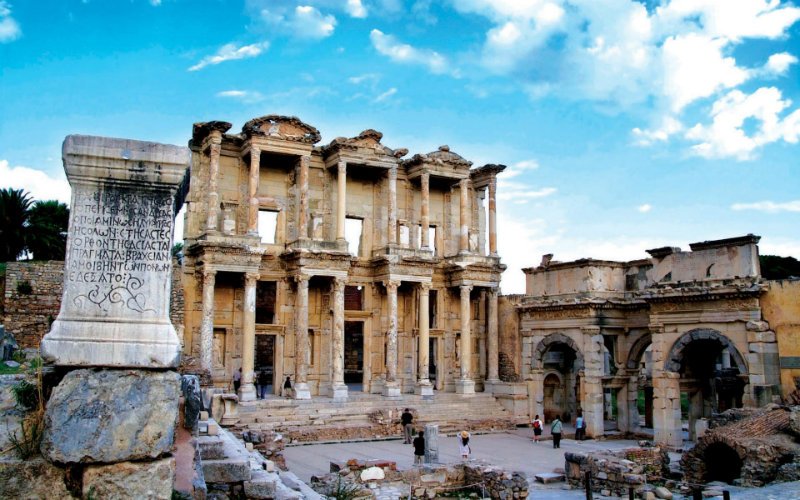Библиотека Цельса - Эфес
This impressive and beautiful building, erected in 117 AD, is often used to symbolise Ephesus. It was erected to honour Gaius Julius Celsus Poleaeanus, a former consul and governor of the Roman Province of Asia, one of the very few of Greek origin to attain that rank. Celsus was buried in a domed vault beneath the main entrance to the library - a very rare honour, as most people were buried outside the city limits. Above his grave was a statue of Athena, Goddess of Wisdom. The library was completed by his son, Gaius Julius Aquila, who himself became a consul, using his father’s wealth. Celsus bequeathed 25,000 Denarii (about $500,000) to stock the library which, with more than 12,000 scrolls, was the third largest of its time, after those at Alexandra and Pergamum. The scrolls were stored in niches around the perimeter, protected from extremes of temperature and humidity by double walls.
The building was originally a single hall, facing East to give the maximum light to early risers. An auditorium for lectures and presentations was added at one side during the rule of Emperor Hadrian.
The design of the facade was heavily influenced by Greek tradition, though it was built using Roman techniques in brick and concrete. It has two levels with nine steps leading up from the base platform to the three entrances, the largest of which is in the centre. To the sides of the entrances are four pairs of pedestals, each bearing a Corinthian style column. Above the entrances are three windows, again with columns at their sides.
The central columns are taller than their outer companions, giving the illusion of extra height to the building. The columns have niches which contained statues known as the Virtues of Celsus; Wisdom (Sophia), Intelligence (Ennoia), Valor (Arete) and Knowledge (Episteme). The statues present today are copies, the originals having been taken to the Ephesus Museum in Vienna in 1910 following the restoration of the library, helped by the Austrian Archaeological Institute.

